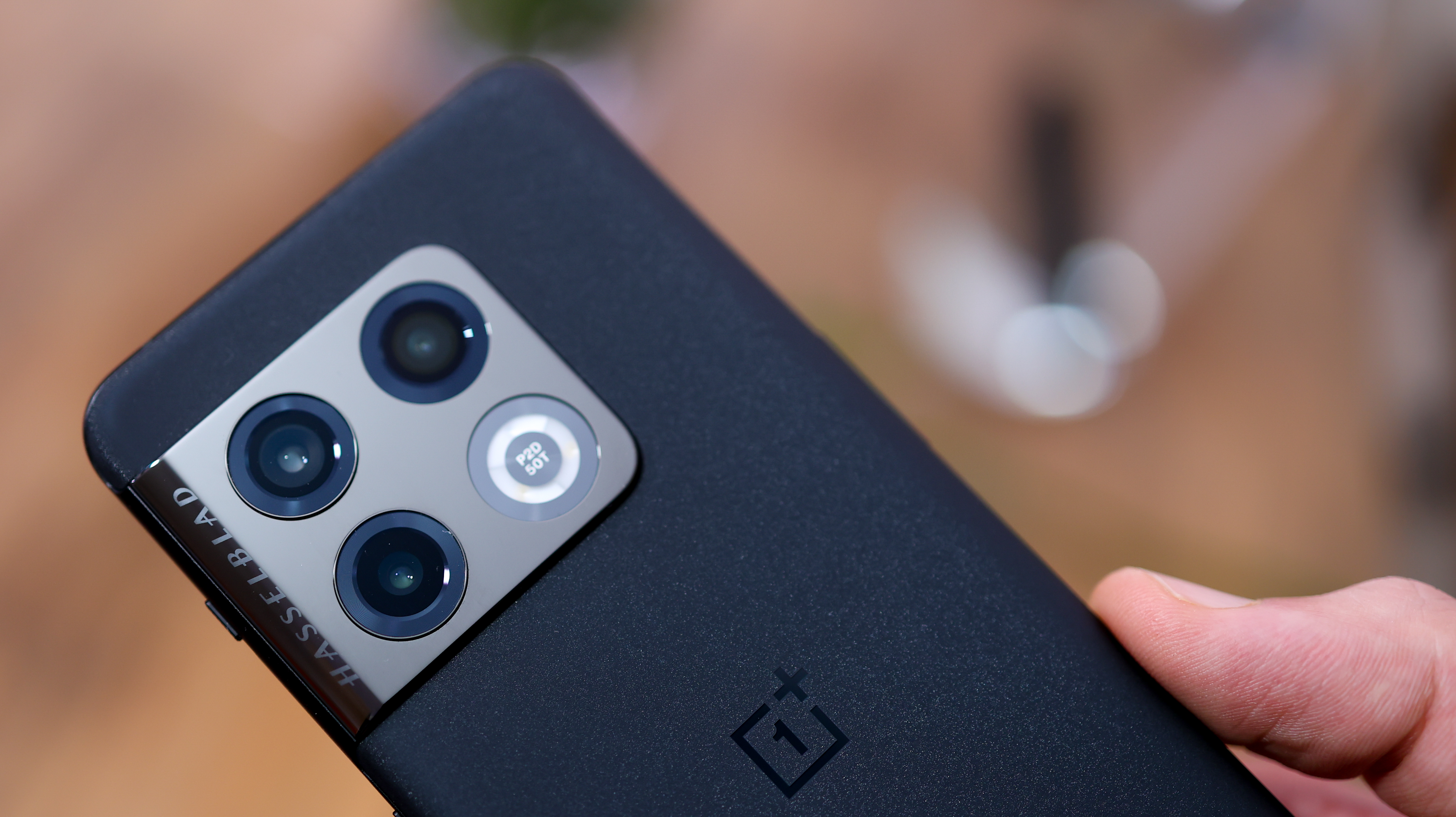Our Verdict
With its striking screen, top-tier specs, and capable camera, the OnePlus 10 Pro is anything but a letdown. Most notably, the phone's super-wide camera crams a GoPro-style field of view, which is great for dynamic, high-impact snaps, and it's also one of the most powerful smartphones available at its price.
For
- Excellent screen quality
- Impressive camera system
- Fully featured across the board
Against
- Gets hot when gaming
- No official water resistance
- Occasionally sticky camera focus
Why you can trust Creative Bloq
The OnePlus 10 Pro brings back Hasselblad camera tuning for the second generation of its top-tier smartphone and is available alongside the lower-cost OnePlus 10T. While the 10T is the power-focused flagship, with a slightly fresher chip and best-in-class 150W fast charging, the OnePlus 10 Pro looks like the all-rounder, with a special focus on photography.
So what makes the OnePlus 10 Pro an all-rounder and one of the best camera phones? For starters, there's that camera mix. The main camera is high-resolution and loaded with features to help you get the best from it – optical image stabilisation (OIS), phase detection autofocus (PDAF) – the list goes on.
Next up, there's the super-wide camera, with its best-in-class, 150º field of view that goes toe-to-toe with action cameras when it comes to squeezing as much as possible in every shot. Round things off with an optical zoom camera, and the 10 Pro's camera system is a complete package.
The phone's highlights don't end with its camera. Unlike the OnePlus 10T, the 10 Pro has wireless charging, one of the best screens around, and a glass and metal design. When it first launched, the phone did have some camera gremlins that held it back from greatness. But after a slew of updates, is the OnePlus 10 Pro finally the flagship smartphone to rule them all?
OnePlus 10 Pro: design and screen
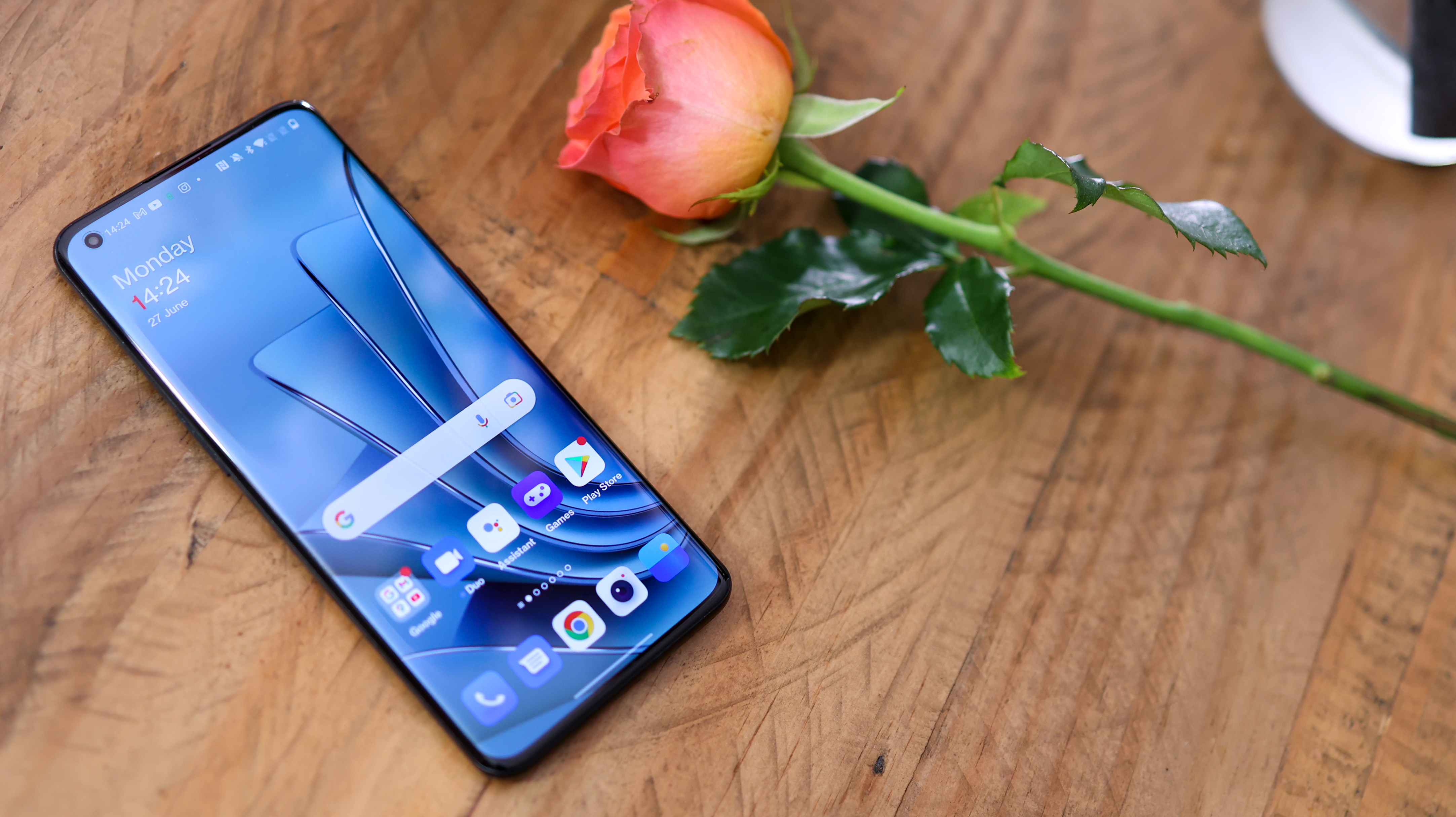
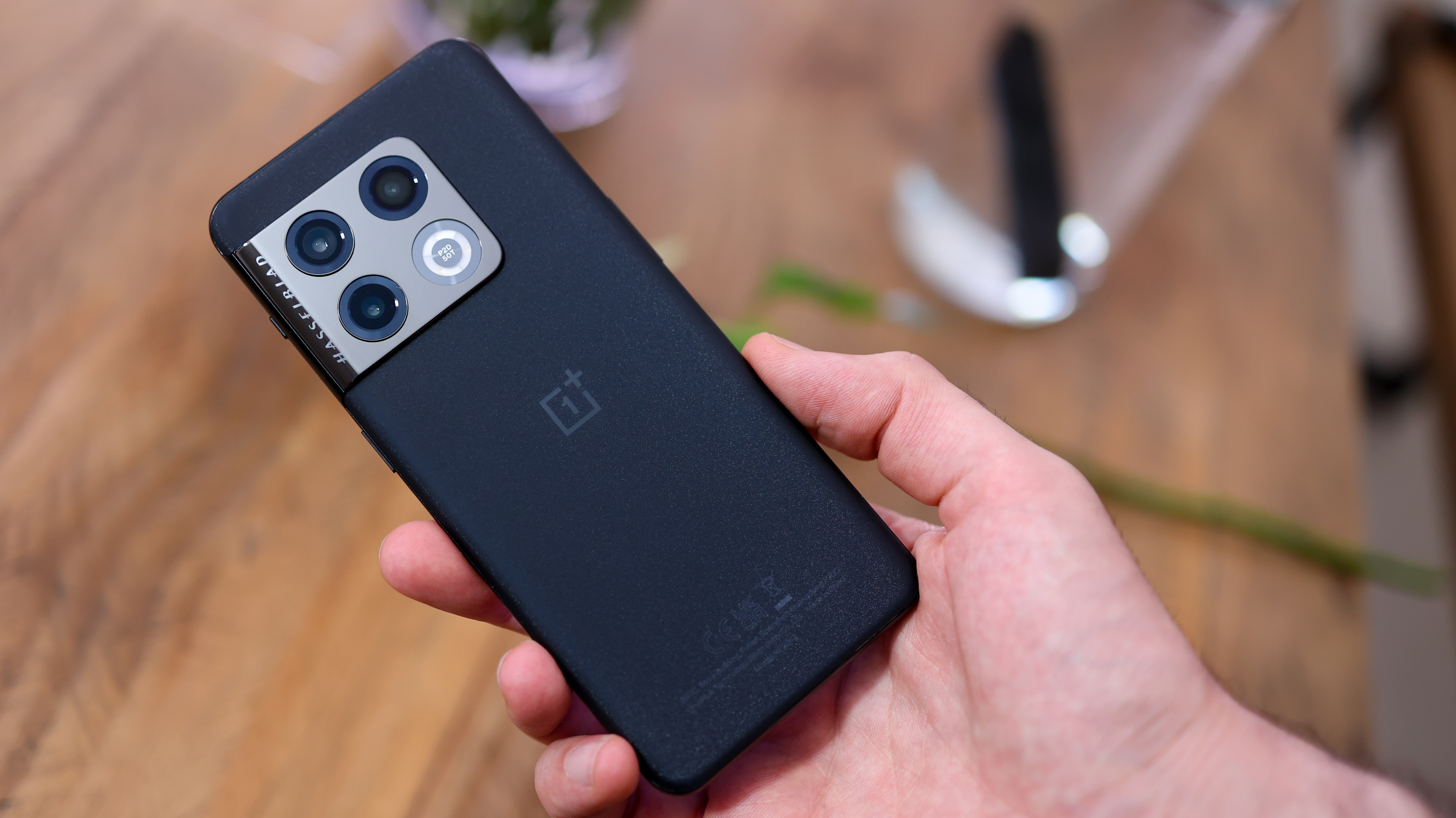
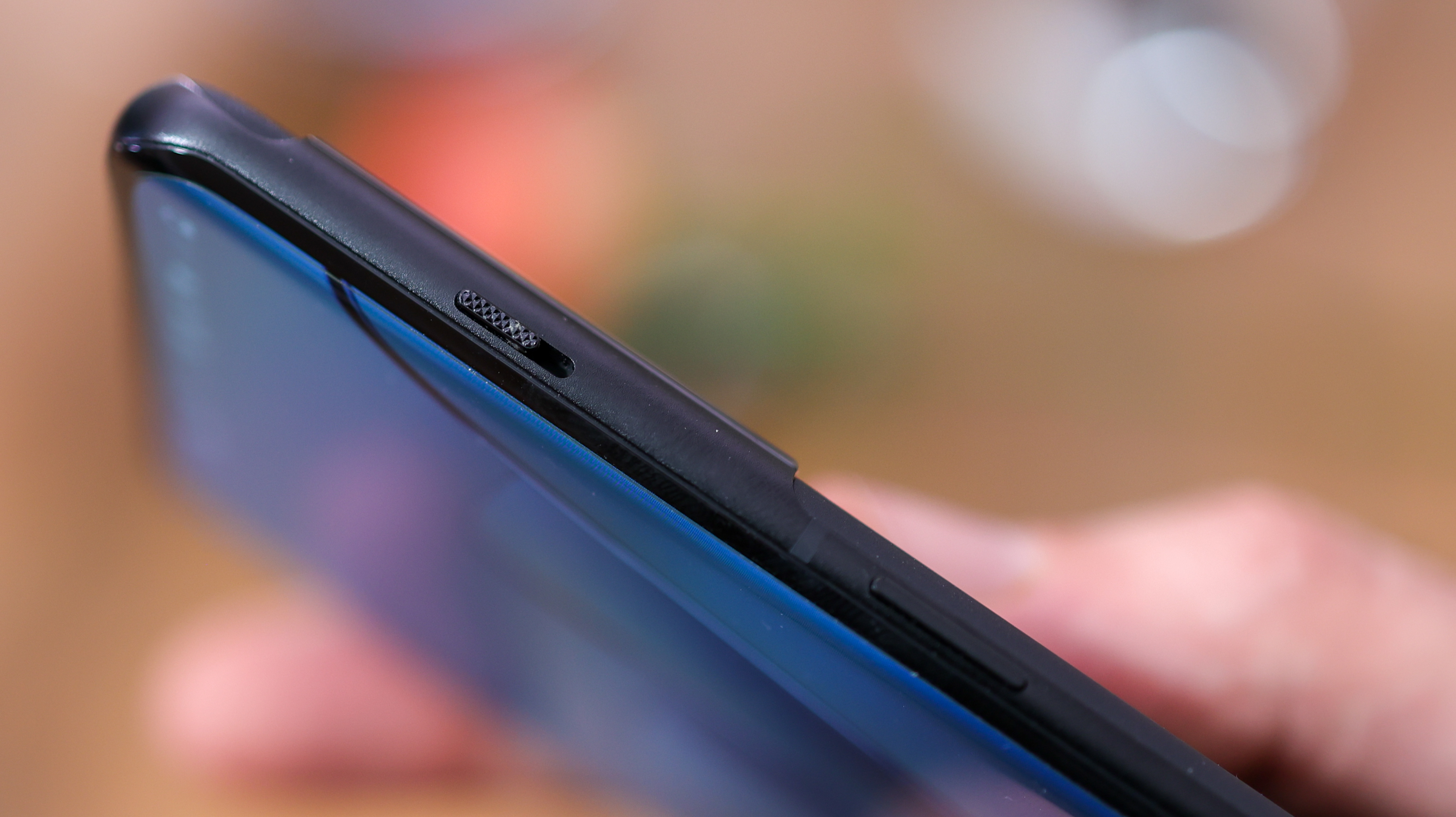
When we first saw the 10 Pro's design in renders, we weren't feeling it. The camera bump that bands in from the side of the phone – it all seemed a bit much, and it is, especially when you consider the camera mix is very similar to that of the Realme GT 2 Pro – and Realme's camera bump is so much more subtle. That said, in the flesh, the 10 Pro looks and feels rich.
The phone's glass front and back curve in to meet the metal frame, which has a matte finish, matching the phone's Gorilla Glass 5 back panel. Available in two color options, Emerald Forest and Volcanic Black – the version we tested.
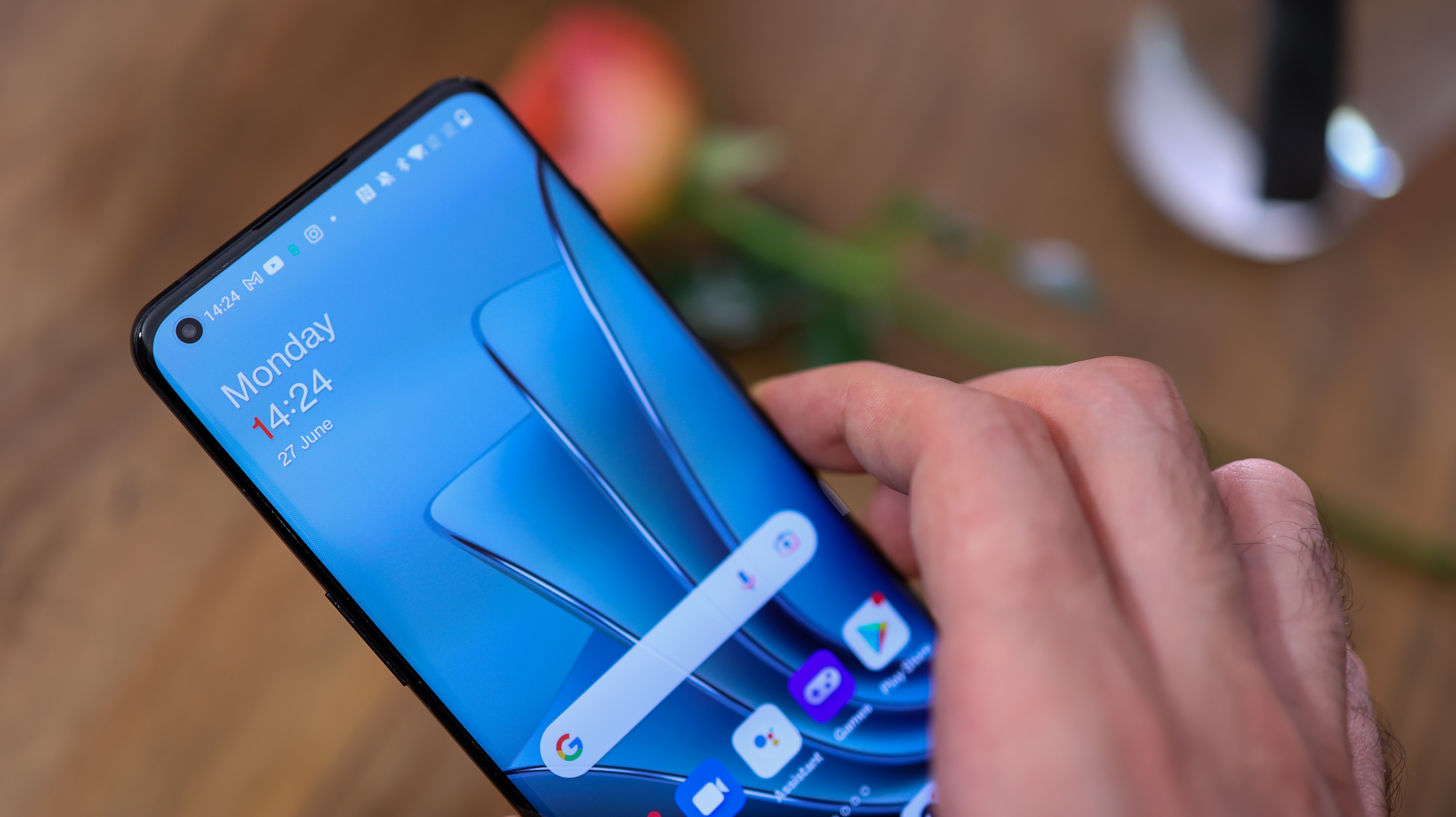
A traditional OnePlus phone through and through, the 10 Pro has an alert slider on the right side, which you can use to switch between silent, vibrate, and standard notification modes quickly. The phone also enjoys Hasselblad branding around the back – a teaser of what to expect from its camera, and there's a power button and volume rocker on the sides, as well as a USB-C port at the base.
The more we used the OnePlus 10 Pro, the more we appreciated how premium it feels. At 8.6mm, it isn't particularly thin, but thanks to its tapered sides, gives the illusion it's much sleeker than its dimensions suggest. It's also well-weighted, and comfortable to hold.
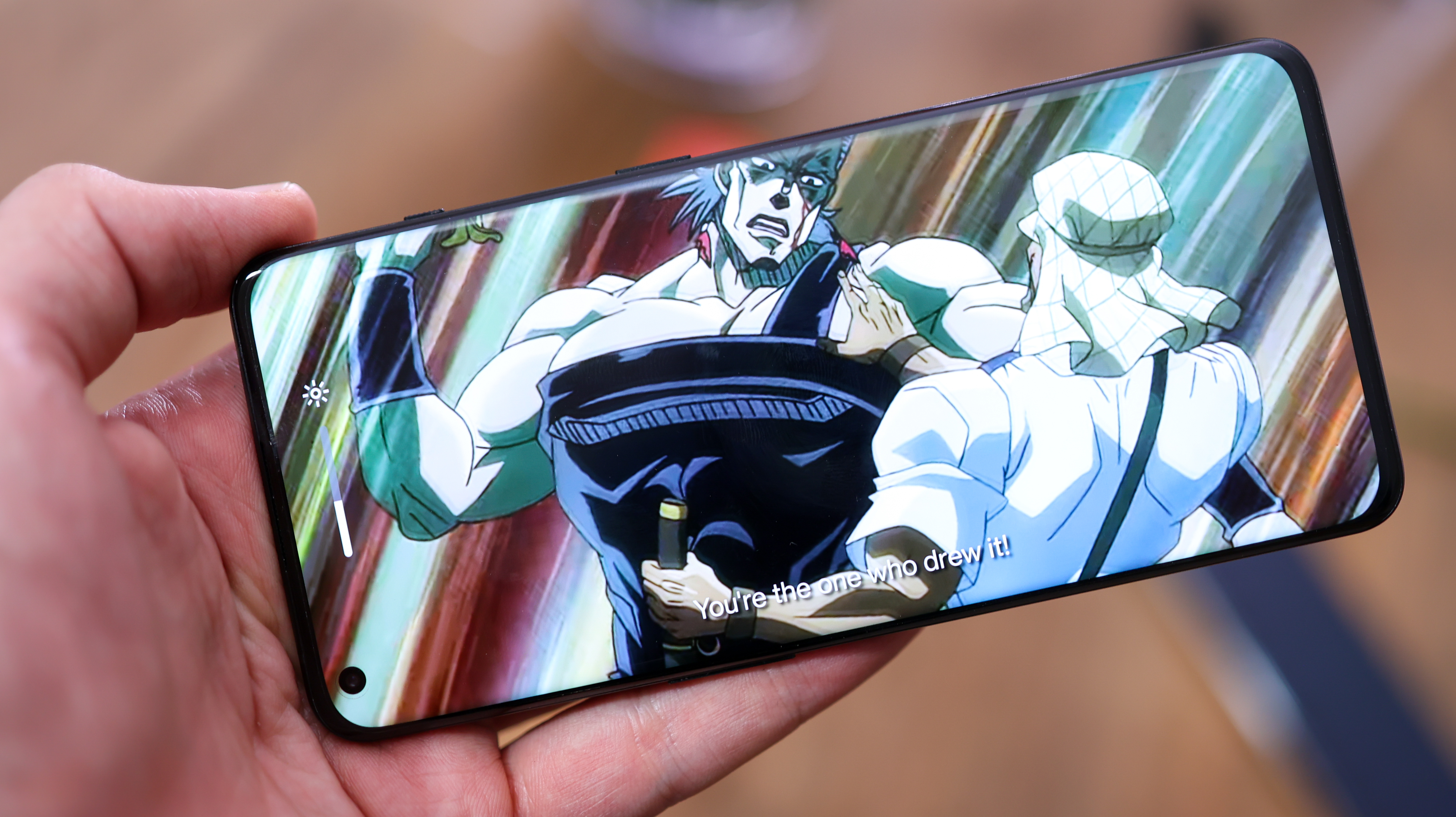
One of the best screens around, the OnePlus 10 Pro's LTPO2 AMOLED display is a quality experience, from its smooth 120Hz refresh rate, to its glowing 1300nits peak brightness, through to its pin-sharp resolution.
Showcasing one of the finest Samsung-made screens we've seen, OnePlus has tuned the 10 Pro's colours to look great by default, whether swiping through the phone's interface, scrolling web pages, or pinching in on your photos. Saturation is lively, contrast is excellent, and blacks are endless.
Purists might not like the fact the 10 Pro has a curved screen. By curving on either side, colour-shifting gives content that falls on the edge a blue tint. Given the degree to which the curve helps the phone feel more sleek and tapered, though, we're happy with the trade-off.
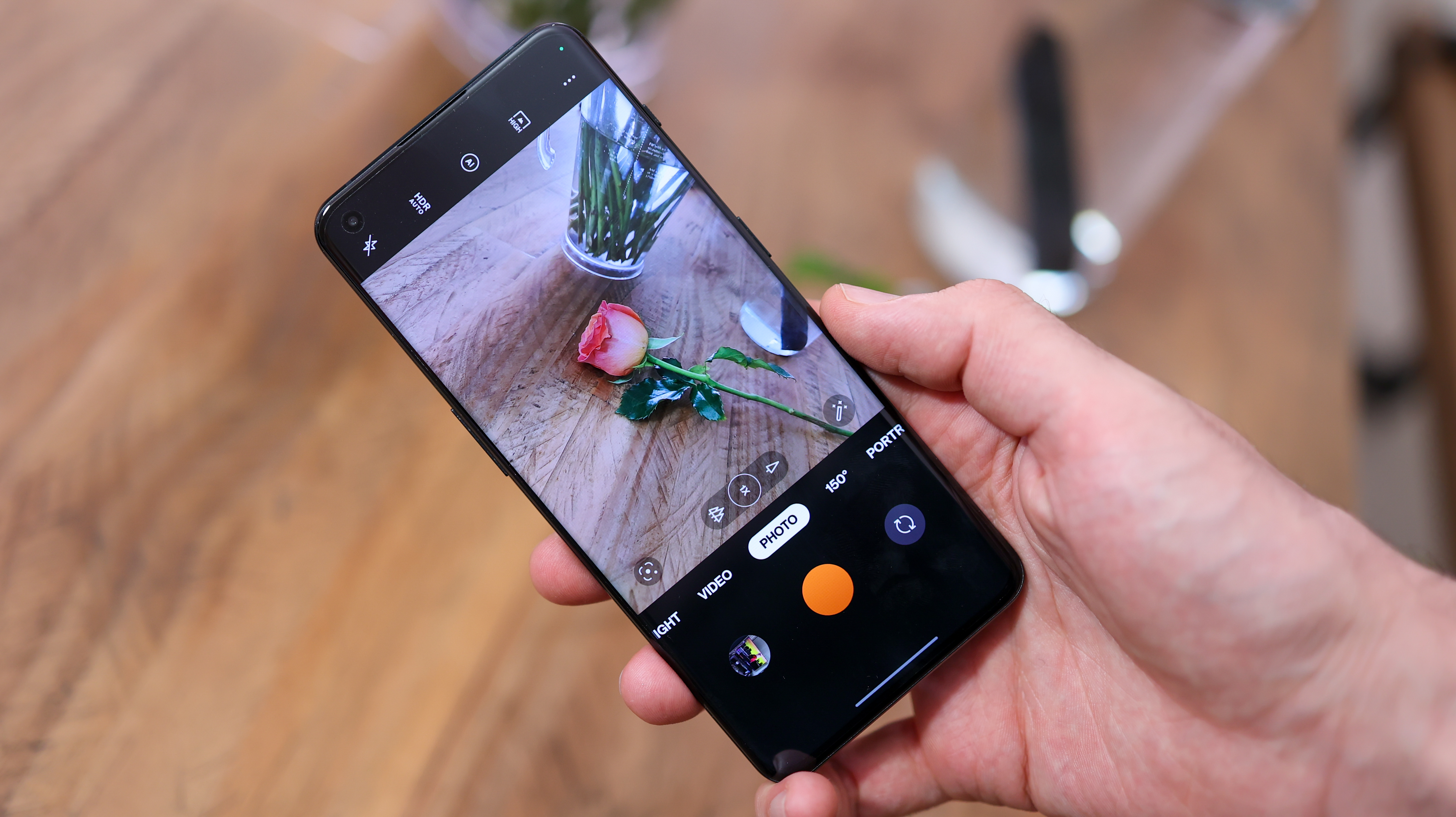
OnePlus 10 Pro: camera
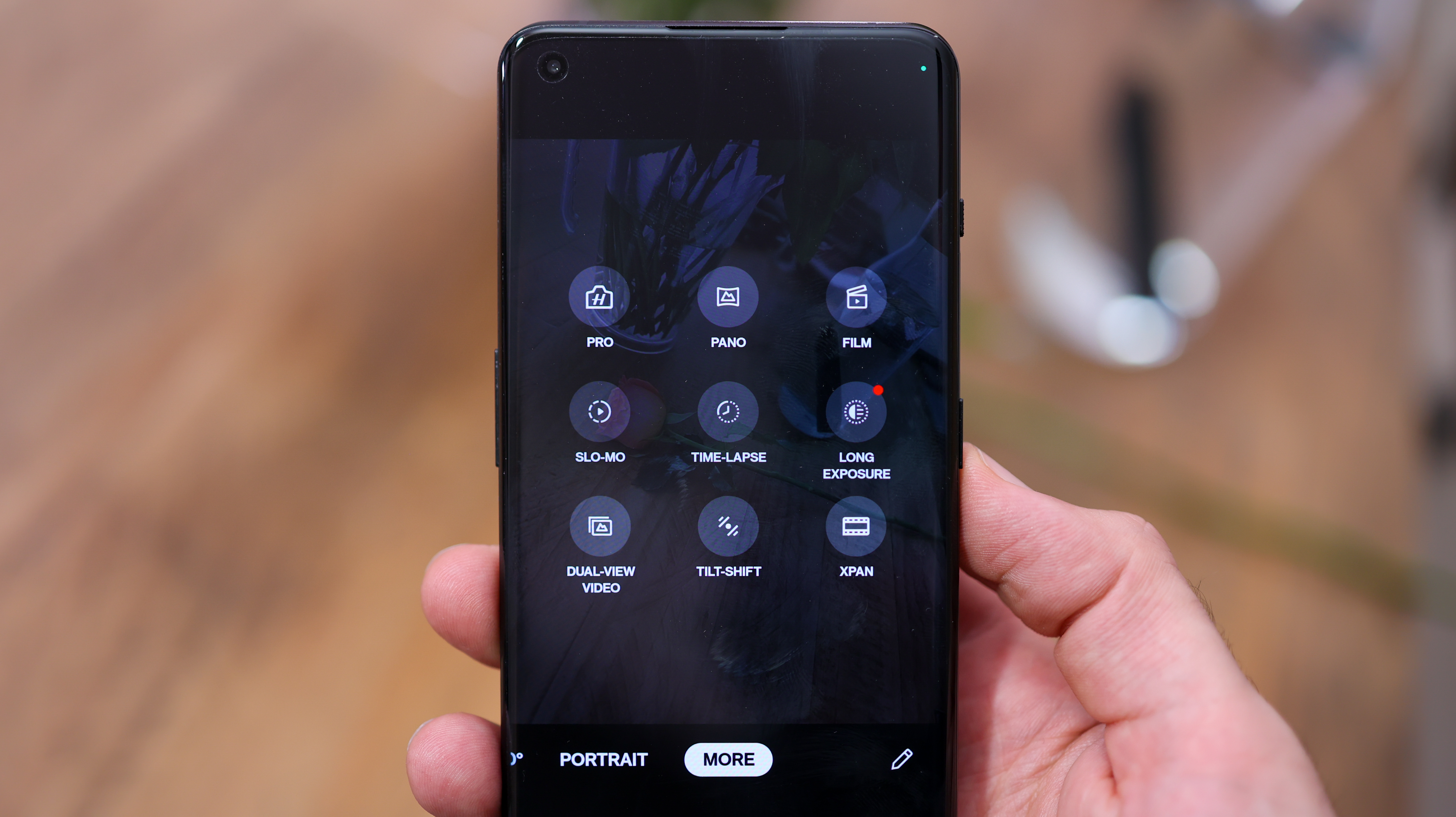
With three cameras around the back and one selfie camera on the front, the OnePlus 10 Pro has a comprehensive camera mix on paper.
The main camera has a 48MP resolution and a 23mm wide angle, so gets more in each shot than most cameras like that of the iPhone 13 Pro, which sits at around 26mm. It's also got an f/1.8 lens, so should let in loads of light and create some pleasing background blur when taking photos of close-up objects. With OIS, photos should be crisp, and PDAF means focus should be swift and accurate.
The super-wide camera is probably the most standout of the three, with only one smartphone currently matching its expansive angle of view, the Realme GT 2 Pro. This grabs action camera-grade, almost fisheye-style photography, and combined with a 50MP resolution, also gets loads of detail in each shot too.
With an optical zoom that's similar to that of the iPhone 13 Pro-line, the OnePlus 10 Pro magnifies things to a 77mm focal length for a roughly three times zoom.



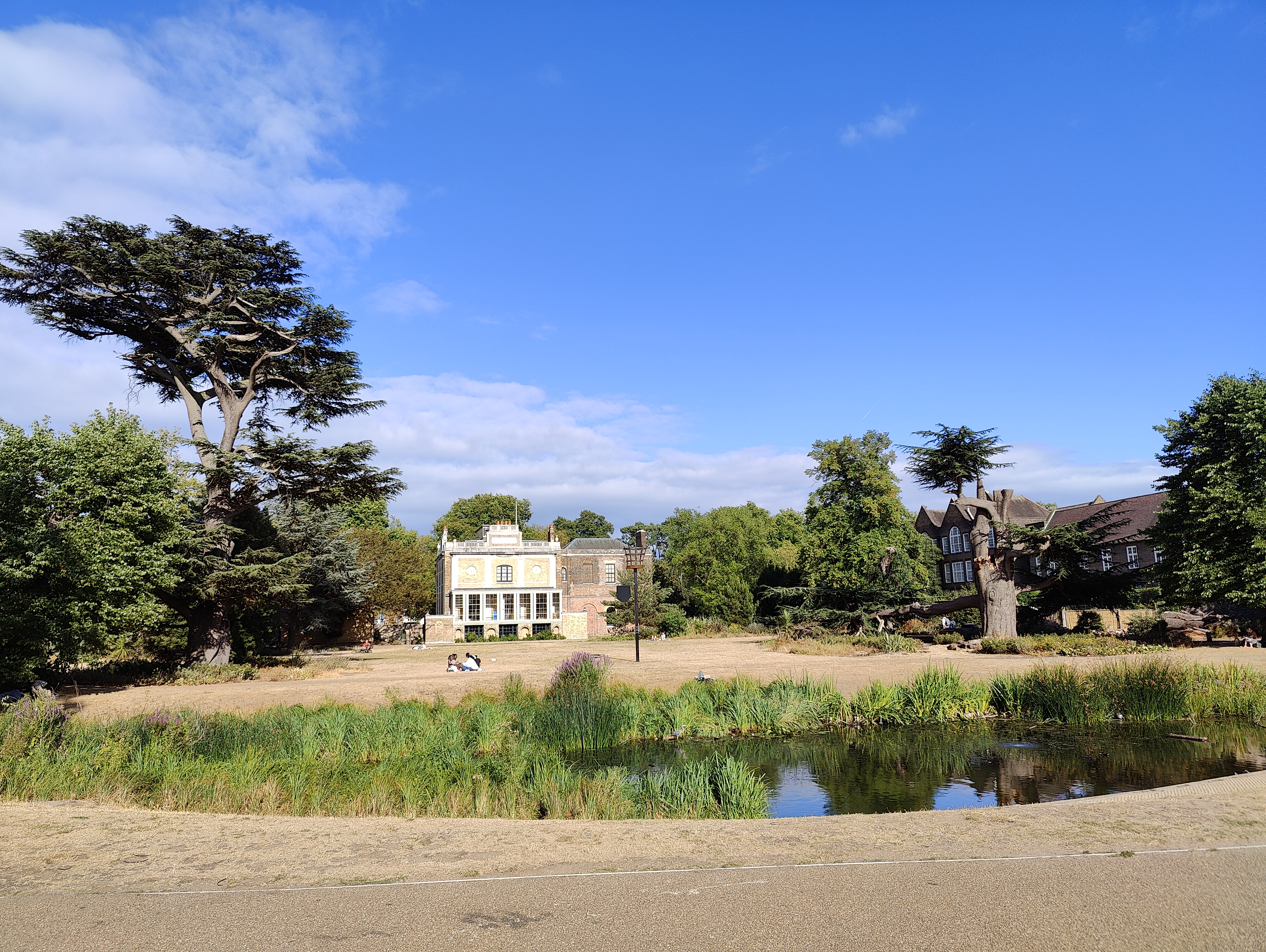

There's a lot to love about the OnePlus 10 Pro's main camera. It handles notoriously difficult subjects like black cats well, pulling out a healthy amount of detail in challenging textures like fur.
The OnePlus 10 Pro's main camera captures close-up photos with amongst the shallowest depth of field effect (blurry background with a sharp subject) we've seen on any smartphone. It's so shallow, that when taking a picture of subjects less than half a meter away, the phone can miss the mark and focus a little too far forward or back.
OnePlus could also do with making a more refined focus point to help counter this. As a result, when it gets it right, photos look fantastic, as illustrated below in the image of the thistle. When it doesn't, however, you can end up with a soft, blurred subject.
Night photography is handled well on the 10 Pro, though isn't best in class. The secondary cameras in particular, can struggle when the lights go down. On a sunny day, though, the super-wide camera is excellent, capturing almost fisheye-style photos in 150º mode, and standard ultra-wide angle photos in the main camera app – almost like two cameras in one. It's a shame the ultra-wide misses out on autofocus, so you can't take pictures of close-up subjects, but that's its main shortcoming, along with middling performance in low light.




As for zoom range, the OnePlus 10 Pro is as competitive as it needs to be for the price – its photos stack up well when compared to iPhones, though the Samsung Galaxy S22 Ultra with its class-leading 10x periscope zoom wipes the floor with the best from both Apple and OnePlus.
Up to 8K resolution video at 30 frames per second (fps), or 4K video at up to 120fps means the OnePlus 10 Pro is the one to get if you want to edit videos – not the 10T, which caps out at 4K resolution. Footage from the Pro looks good in bright light, is held together well by image stabilisation and the LOG mode makes it an editor's best friend.
OnePlus 10 Pro: performance and interface
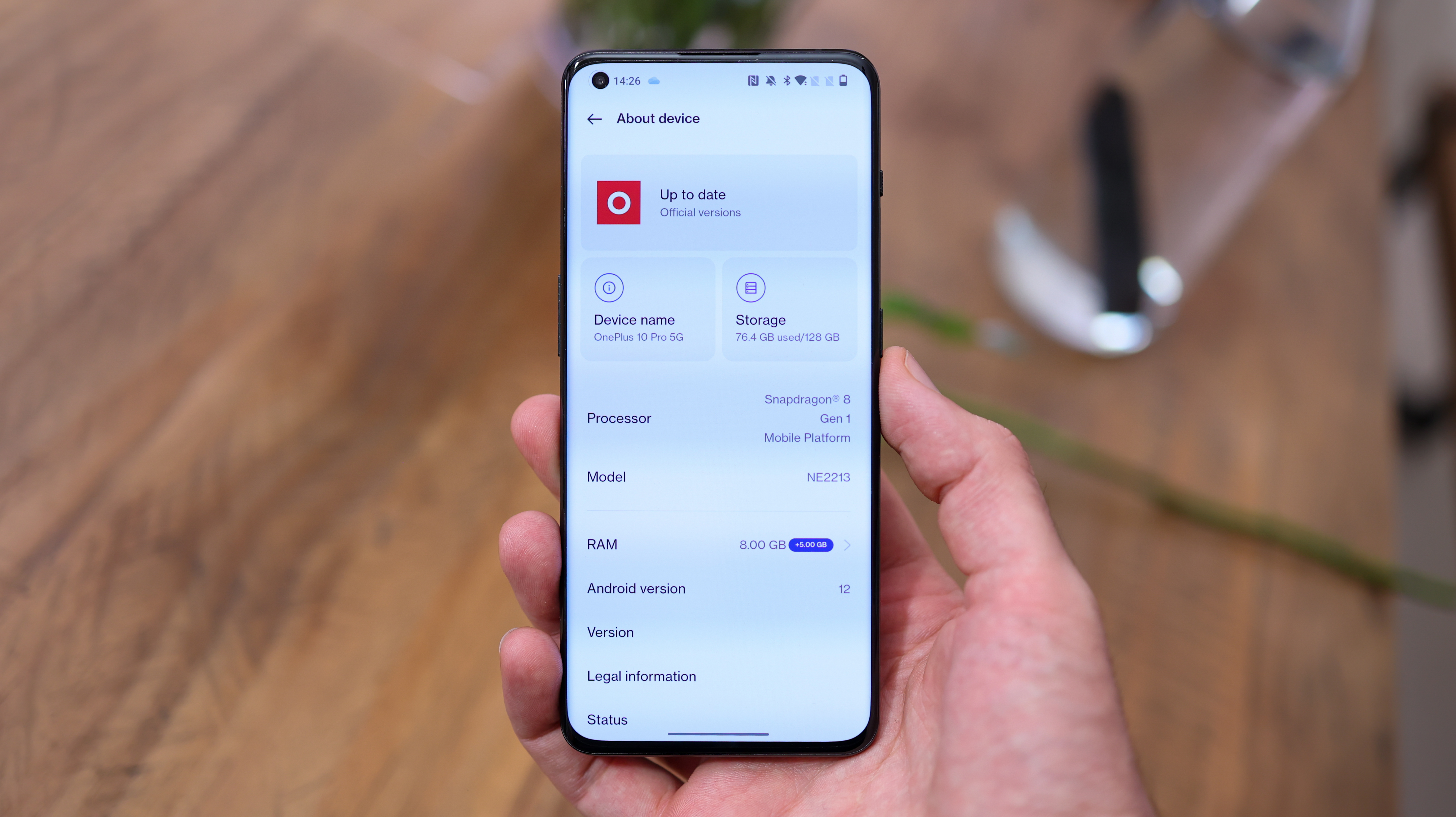
The most powerful chips in Android phones at the time of writing this review are the Qualcomm Snapdragon 8 Gen 1, and the slightly more powerful 8+ Gen 1. While the slightly cheaper 10T gets the 8+ Gen 1, the 10 Pro gets the older 8 Gen 1. This might sound like a raw deal, but it really isn't.
The OnePlus 10 Pro is amongst the most powerful smartphones around for its price and will chew through any task you set it to – be it a graphically intensive game or a 4K video edit.
The phone also ships with either 8GB or 12GB RAM, so multi-tasking is handled well, and with 128GB or 256GB storage, there's plenty of space for files, photos, and apps. With no expandable storage, though, if you do pick up the OnePlus 10 Pro, be sure to buy a version with enough space to last as long as you'll need it to.
Running with Android 12 and OnePlus's OxygenOS, a skin that sits on top of Android, the 10 Pro has a host of handy tools to give you quick access to features like frequently used apps, Spotify playlists, and weather information. The phone also offers excellent app support, and runs smoothly, with stable performance and no bugs in our week with it.
OnePlus 10 Pro: battery life and charging
A large 5000mAh battery powers the OnePlus 10 Pro comfortably from morning to night. While not best-in-class, especially when using the phone at max brightness, it's still a long-lasting phone by flagship standards, and it outperforms the 10T by a good few hours.
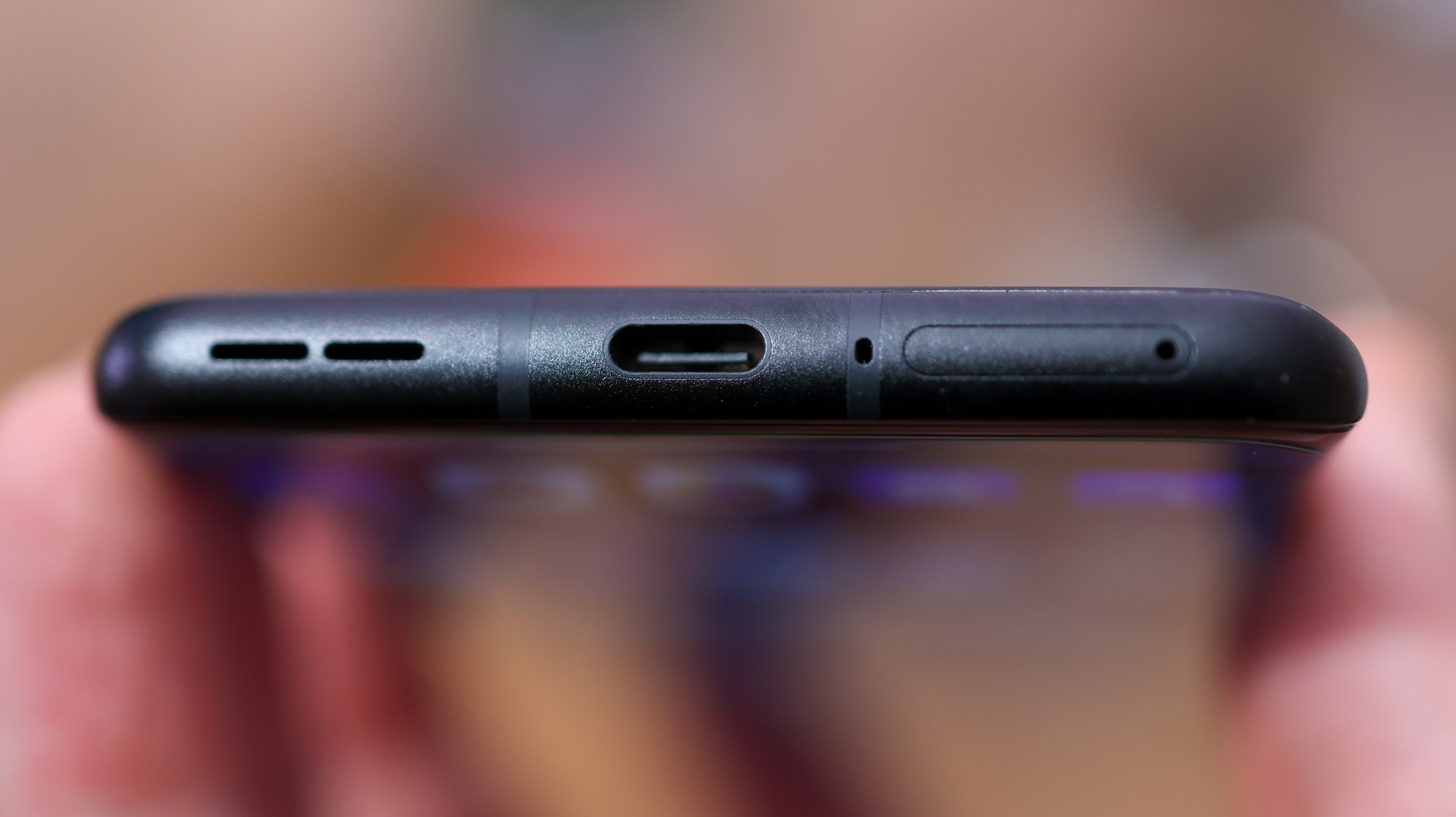
The OnePlus 10 Pro charges quickly, with wired and wireless charging. In the box, the phone ships with an 80W charging brick, and can fill up the tank in around 35 minutes. If you're a wireless charging fan, it supports up to 50W charging with a OnePlus WarpCharge 50 wireless charger, which retails for around £70. Of course, any wireless charger will do the job – just not at those maxed-out speeds.
OnePlus 10 Pro: should you buy one?
The OnePlus 10 Pro is one of the most balanced smartphones around right now. It doesn't have the very best camera system around, but for the price, very little other than the Pixel 6 Pro will outperform it.
What you do get in the 10 Pro is a sleek designed phone with a brilliant screen, powerful internals, fast wired and wireless charging, and strong battery life. It also has a stable interface and excellent app support.
If you want the very latest, greatest power, and fastest charging, then the OnePlus 10T might be one to consider. Alternatively, anyone who needs a mightier camera zoom would be well served with the much pricier Galaxy S22 Ultra. If your budget caps out at the 10 Pro's price, though, you'll struggle to get more flagship phone for your money than OnePlus's 10 Pro. It's, without a doubt, one of the best camera phones.
Read more:
- The best cameras

Thank you for reading 5 articles this month* Join now for unlimited access
Enjoy your first month for just £1 / $1 / €1
*Read 5 free articles per month without a subscription

Join now for unlimited access
Try first month for just £1 / $1 / €1
out of 10
With its striking screen, top-tier specs, and capable camera, the OnePlus 10 Pro is anything but a letdown. Most notably, the phone's super-wide camera crams a GoPro-style field of view, which is great for dynamic, high-impact snaps, and it's also one of the most powerful smartphones available at its price.

Basil is a trained graphic designer and photography expert who geeks out over anything to do with digital imaging and sketching. Now a tech journalist and content director at a creative comms agency, he covers tech through a real-world lens, contributing to titles including Creative Bloq, Digital Camera World, Metro, T3, TechRadar and WIRED.
